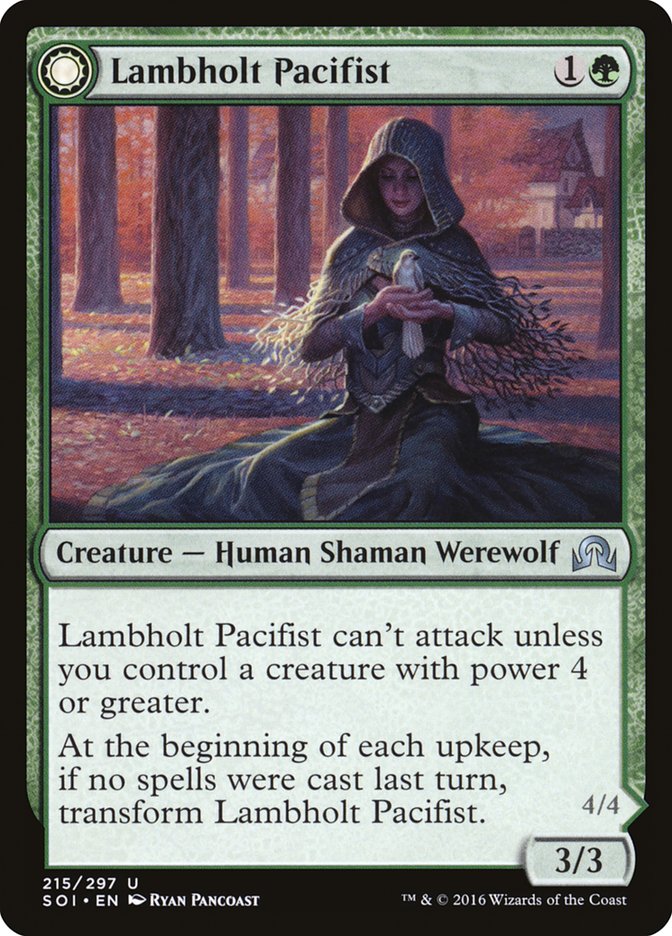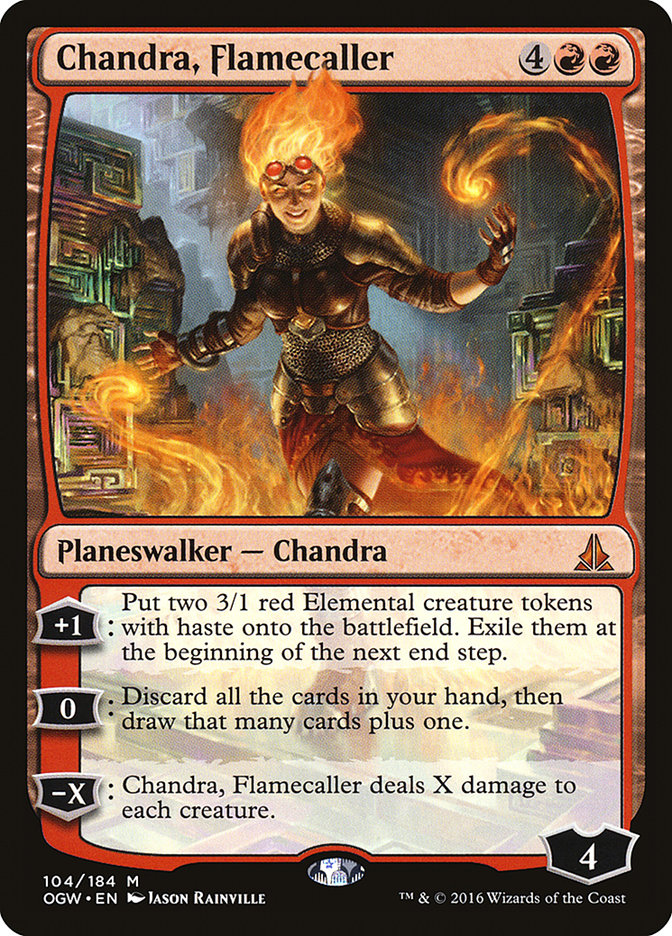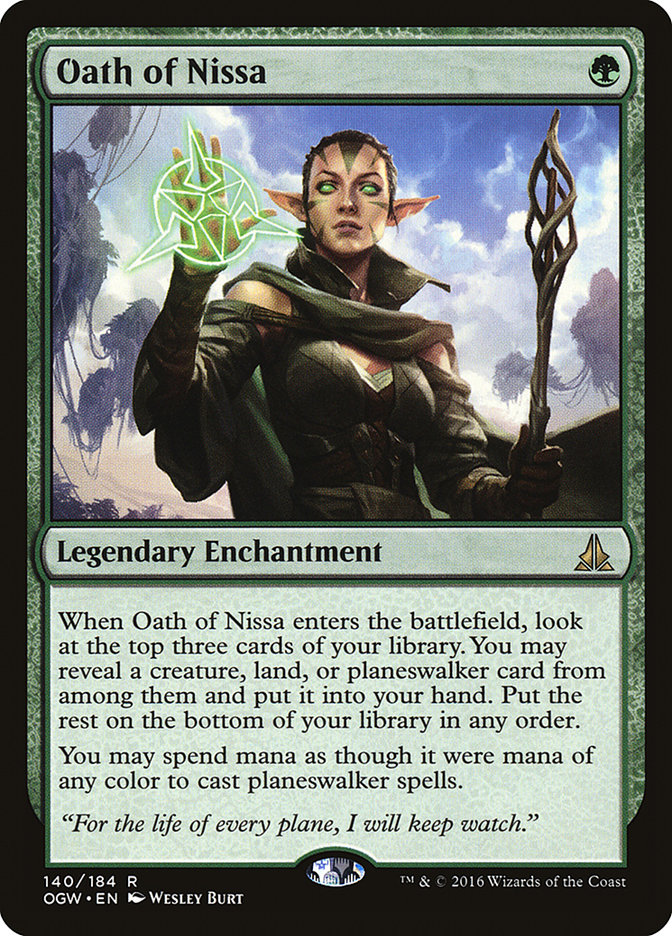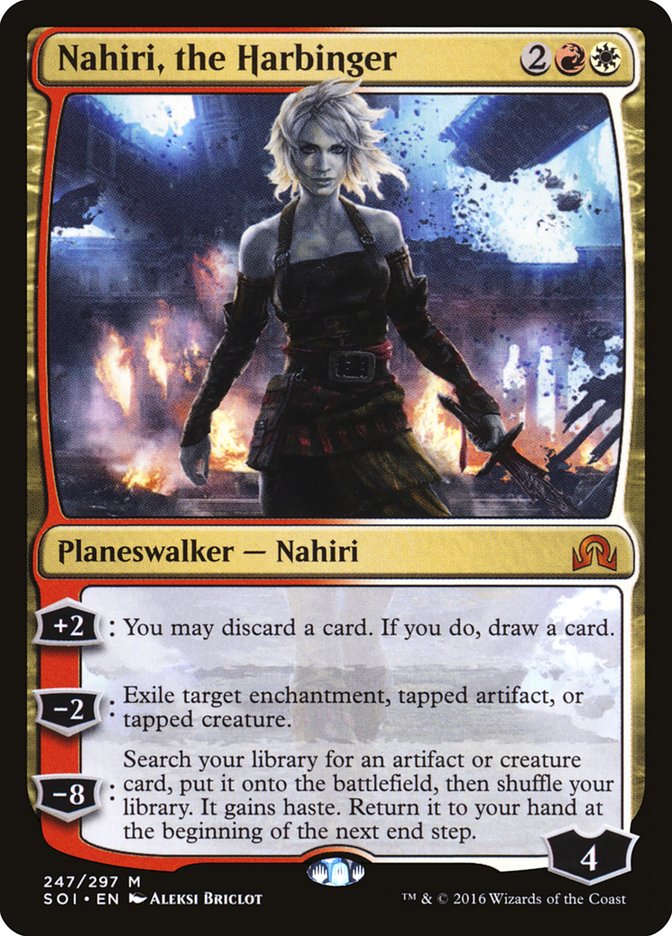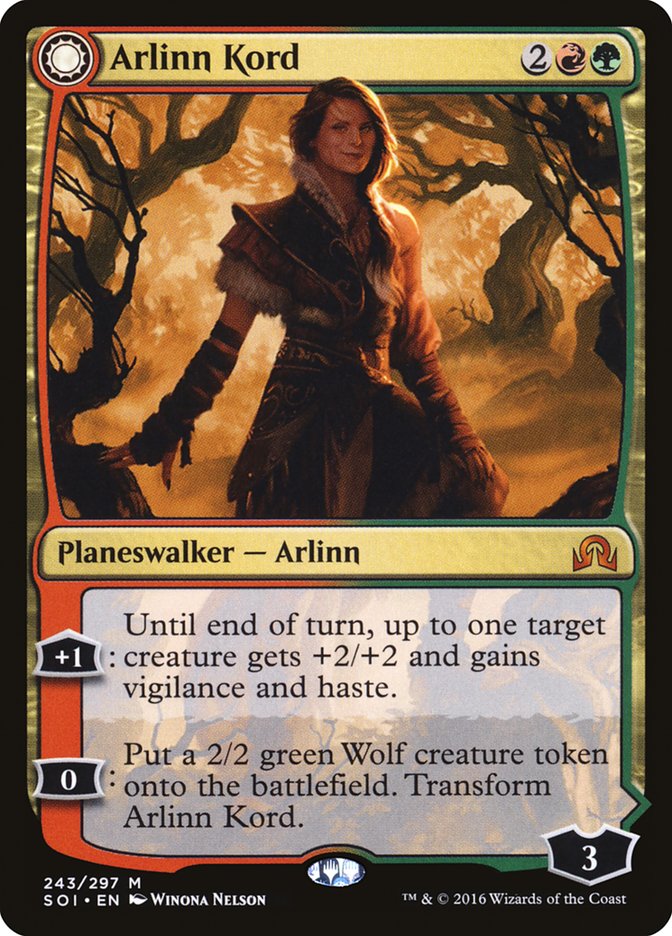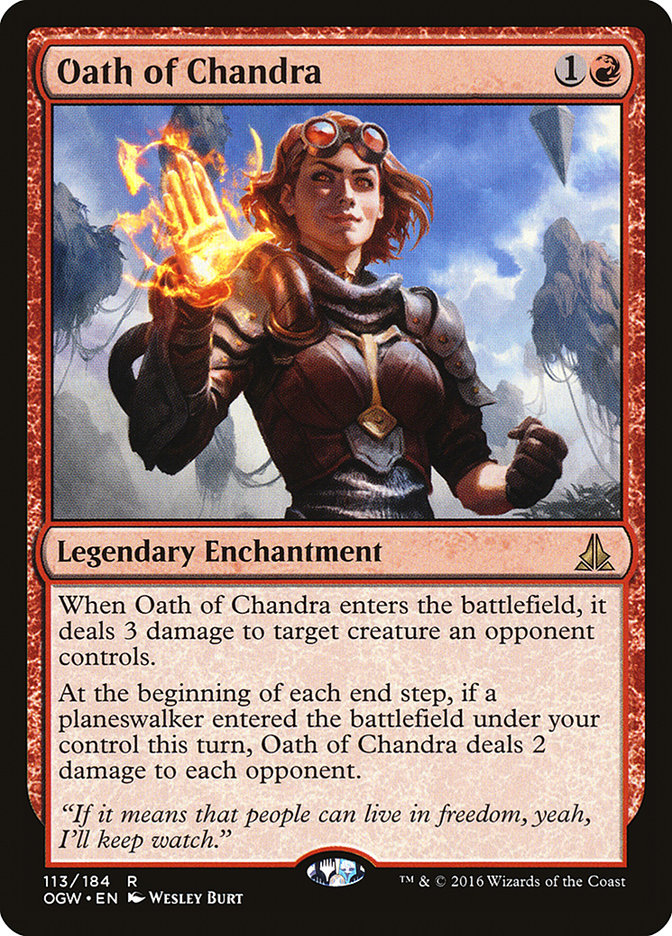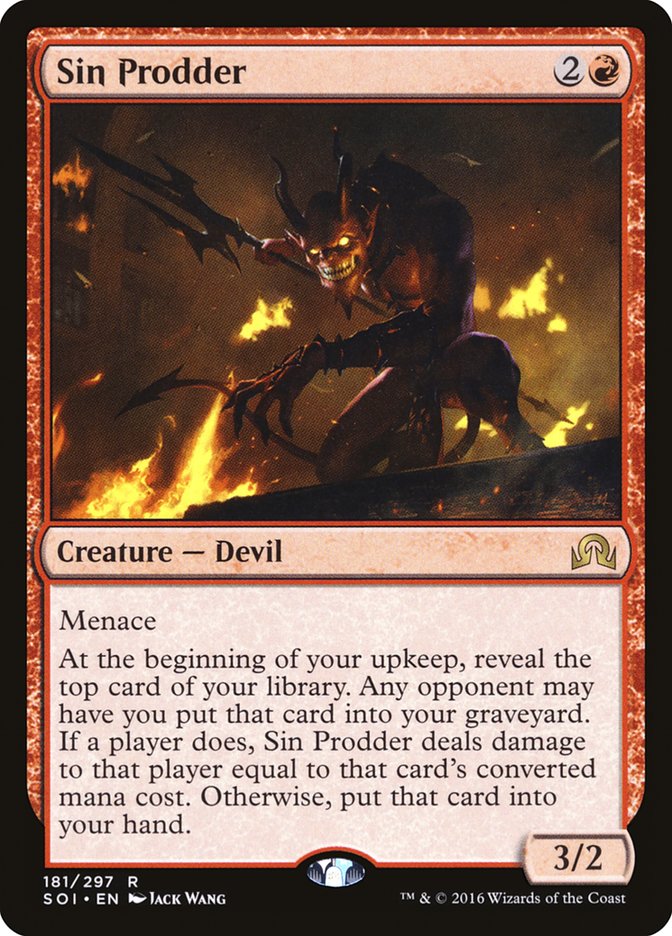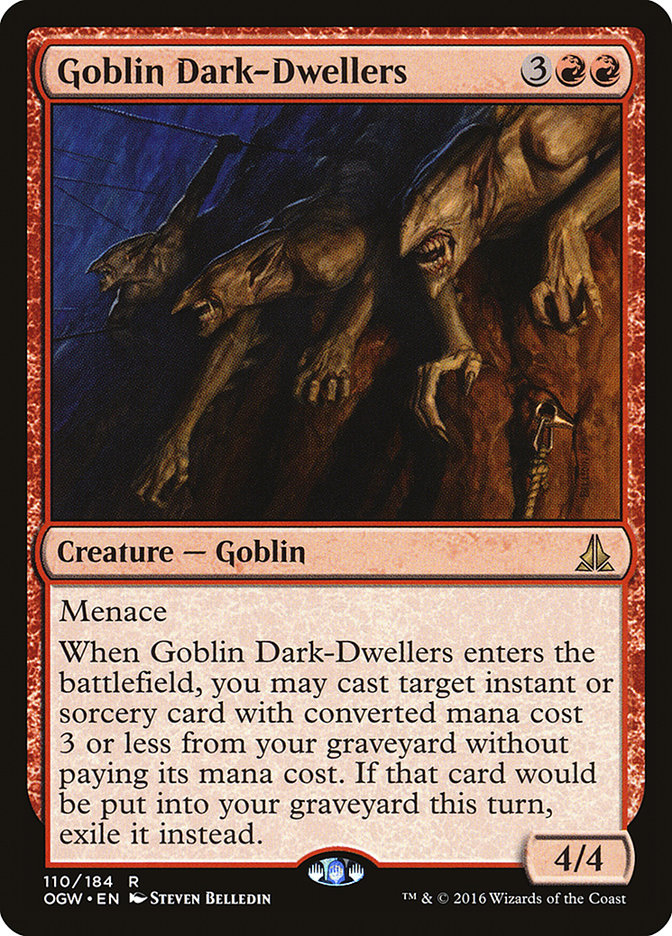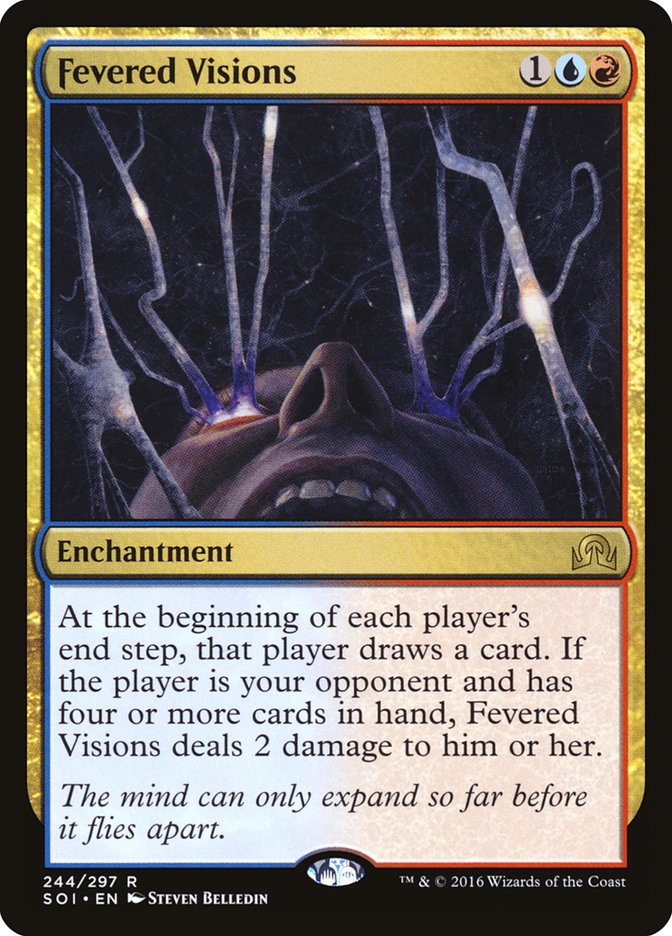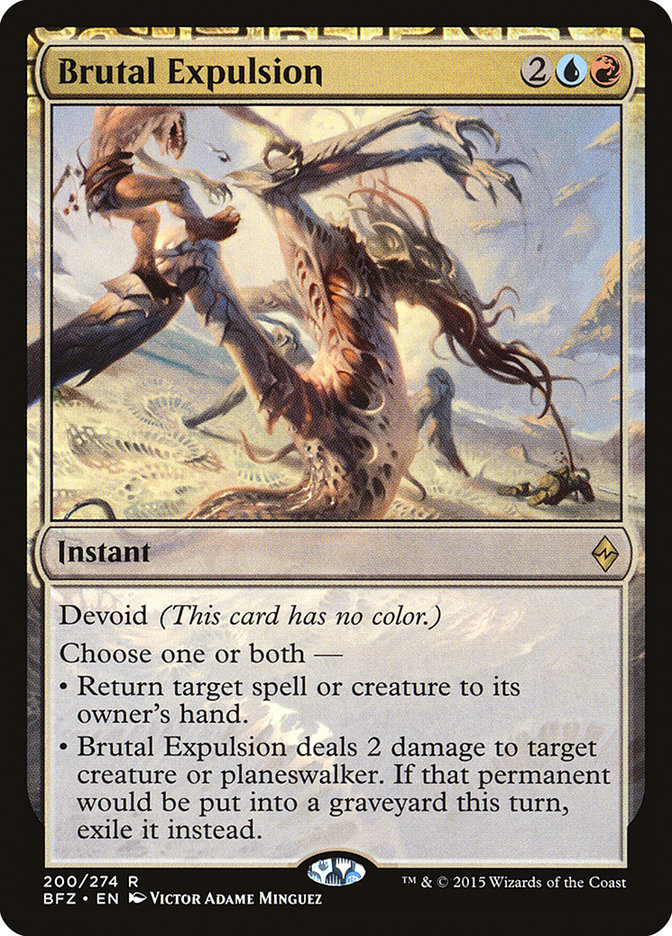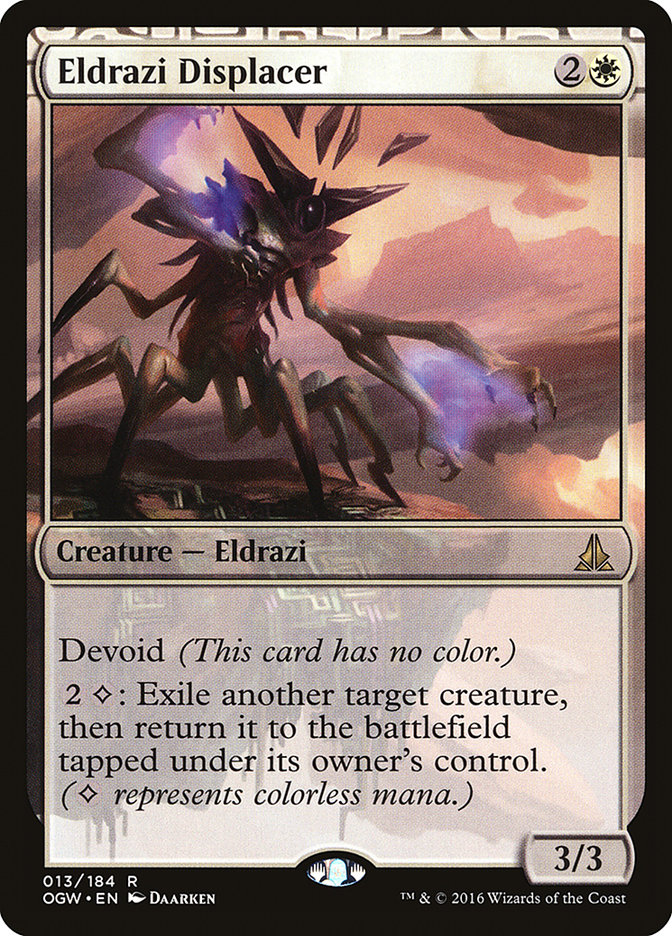It’s not every format you see the two decks in the finals of the Pro Tour turn into more than half the field the following week.
Grand Prix Toronto’s Day 2 was overrun with G/W Tokens (39 of the Top 100) and Bant Company (fourteen of the Top 100). Without question, these decks play a major role in defining the format; however, they aren’t exactly dominating late in Day 2.
Despite putting three copies in the Top 8 (including one Naya Tokens list), Tokens actually slightly underperformed in the Top 32 metagame compared to what we’d expect from a deck making up 39% of the Top 100 field. Bant Company didn’t even put anybody in the Top 8 and fell from 14% of the Top 100 to 9.5% of the Top 32 metagame (weighted by finish).
Here’s a breakdown of GP Toronto’s metagame:
GP Toronto
|
Archetypes |
Top 100 Metagame |
Top 32 Weighted |
|
G/W Tokens |
39.0% |
36.5% |
|
Bant Company |
14.0% |
9.5% |
|
B/G/x Company |
14.0% |
15.9% |
|
Mono-White Humans |
8.0% |
7.9% |
|
Ramp* |
5.0% |
0.0% |
|
Esper Control |
4.0% |
9.5% |
|
Grixis Control |
4.0% |
11.1% |
|
Sultai Control |
3.0% |
0.0% |
|
W/B Midrange |
2.0% |
9.5% |
|
Abzan Midrange |
2.0% |
0.0% |
|
Misc |
6.0% |
0.0% |
*Ramp = G/R Ramp and Goggles Ramp.
Once you add in B/G Aristocrats and Four-Color Rite decks, both of which are also Collected Company-based, we’re talking a full two-thirds of the Top 100 metagame being made up of Tokens or Collected Company. While Humans and B/G did just about exactly as expected, most of the other decks were not so middling. Ramp decks got destroyed, while the only strategies to really overperform were Esper Control, Grixis Control, and W/B Control.
Technically, B/G performed a little above expectation, but it’s being slightly propped up by the Four-Color Rite decks (which were small in number, but did overperform). Before we dive into the various successful control decks, let’s take a look at the deck to beat:
Creatures (20)
Planeswalkers (8)
Lands (26)
Spells (6)

Jon Stern’s update to the G/W tokens his Team Face to Face teammate, Steve Rubin, piloted to a Pro Tour victory in Madrid was simply replacing the five enchantments in the Madrid list (3 Oath of Nissa, 1 Evolutionary Leap, and 1 Stasis Snare) with a playset of Lambholt Pacifists and an extra Forest. Stern correctly identified the massive increase in Dromoka’s Commands we’d be seeing this week, but more importantly wanted to make room for a deceptively powerful Werewolf rather than just sideboarding it.
When you can consistently give Lambholt Pacifist +1/+1, you’re already up to Watchwolf status. Dromoka’s Command; Nissa, Voice of Zendikar; and Gideon, Ally of Zendikar all accomplish this. And it’s not that the +1/+1 counter puts it up to 3/3. It really is like putting a +1/+1 counter on a Watchwolf, now attacking for four.
Lambholt Pacifists really are much more, though. Even when you don’t have the ability to pump them, they usually eventually flip, becoming a 4/4 that still only cost you two mana. What’s more, when you do put the +1/+1 counter on them early, they still get bigger when they eventually flip. Finally, even when nothing is going right, you can always block with them. A 3/3 on defense is nothing to shake a stick at.
Stern’s sideboard doesn’t stray much from last week’s formula, mainly just filling the two slots freed up from the Pacifists moving to the starting 60 by adding a couple of Planar Outbursts. This gives him a powerful mirror-breaker, letting him go over the top against other token decks.
While the Face to Face build of Tokens was far and away the most popular, there were other lists, such as this Naya Tokens deck by Michael Sheng:
Creatures (10)
Planeswalkers (10)
Lands (26)
Spells (14)

Michael’s list splashes red for Chandra, Flamecaller, which may seem ambitious with just seven red-producing lands.
Chandra is a powerful card, of course, but how is this possible? The Radiant Flames in the sideboard are challenging enough, but Chandra’s double red…
A single Oath of Nissa, of course, makes casting Chandra no problem. Additionally, it increases the chances of finding the red we need for Radiant Flames when we sideboard it in.
The other twist to this build is the use of more removal than the Face to Face style, Declaration in Stone and Tragic Arrogance in addition to the Dromoka’s Commands and Stasis Snare. There is another way to build Naya tokens, however. Rob Birdsall won this weekend’s SCG Classic in Milwaukee with a Naya Token list that goes a very different direction:
Creatures (9)
- 1 Dragonlord Atarka
- 1 Dragonlord Dromoka
- 2 Nissa, Vastwood Seer
- 1 Linvala, the Preserver
- 4 Sylvan Advocate
Planeswalkers (10)
- 2 Gideon, Ally of Zendikar
- 2 Chandra, Flamecaller
- 2 Nissa, Voice of Zendikar
- 2 Nahiri, the Harbinger
- 2 Arlinn Kord
Lands (24)
Spells (17)

Rob’s list has a much stronger red component, trading two Nissa, Voice of Zendikar and two Gideon, Ally of Zendikar for two Nahiri, the Harbinger and two Arlinn Kord, plus a couple of Nissa, Vastwood Seer.
Even more importantly, he removes most of the small creatures, instead playing three fatties that make his Nahiris good, as well as playing a lot more removal, including a playset of Oath of Chandra and three maindeck Radiant Flames.
Oath of Chandra is a very underrated card right now. I particularly like how it kills Sylvan Advocate or Jace, Vryn’s Prodigy while leaving you with a free source of damage for helping pressure Nissa or Gideon later. I am nervous about how much less reliably untapped Rob’s mana is, but that’s kind of the trade-off for playing full-on three colors instead of a virtual two.
I like the big creatures in Rob’s sideboard, but I’m not sure I can get into the Sin Prodders.
Sin Prodder is a Dark Confidant for people that love Browbeat. That wouldn’t be so bad, particularly since menace is nice. It’s just that each time you flip a land, that’s zero damage or draw (and this list needs the extra land). When you do flip spells, a lot of the spells don’t have high costs. Even when you do flip spells with high costs, you are just drawing a card (and often you can’t cast it for a while). Besides, it’s not like people are going to sideboard out all of their removal against the Tokens deck with Sylvan Advocate and Dragons.
Speaking of Dragons, let’s take a look at the winner of Grand Prix Toronto, Robert Lombardi, and his build of Esper Dragons:
Creatures (11)
Planeswalkers (1)
Lands (26)
Spells (22)

After Day 1, the Top 100 contained just a single Esper Dragons list. Interesting to see it come out on top, while the three Esper Control decks in the Top 100 without Dragons failed to cash.
Lombardi stayed very true to Shota Yasooka’s list, with the main twist being the moving of Kalitas, Traitor of Ghet to the maindeck. This was a great metagame call that was made by basically every black deck from W/B Control to Abzan, Jund, Grixis, and more.
It’s not just that cards like Transgress the Mind can help clear a path for Kalitas. If they kill Jace, Kalitas is more likely to live. If they kill Kalitas, Ojutai is more likely to live. Besides, you can just drop him and kill a creature in the same turn to gain an advantage, even if they untap and then kill him. Finally, they don’t always have a removal spell. Kalitas is just amazing for taking over a game, particularly against G/B Aristocrats, which basically just can’t beat the card under most normal circumstances.
While Kalitas is great at messing up graveyard decks, his exile ability is also fantastic at thwarting Hangarback Walker (they don’t get Thopters) and Zulaport Cutthroat (no draining).
While Esper makes reasonable use of Kalitas, he’s actually an even better fit in Grixis, and actually makes the entire archetype not only viable but actually great:
Creatures (14)
Planeswalkers (1)
Lands (26)
Spells (19)

Grixis performed remarkably well, and I would guess we see a lot more of it next week. Oliver’s list is really just a B/R Control deck, splashing blue for Jace. This is not the format to get too greedy. Two colors and a splash is pretty easy, but it’s hard to do much more than that (maybe with the exception of green-heavy decks). Not only does Oliver pack a playset of Jaces and a full four of Kalitas, he’s got a playset of Goblin Dark-Dwellers, overloading a lot of removal.
I don’t love Goblin Dark-Dwellers in decks where it’s the only creature. The body is just not impactful enough when it lives to make up for how often it eats a removal spell that was just sitting in their hand. However, this Grixis list has fourteen creatures and Wandering Fumaroles. The Dark-Dwellers are living more often, and the damage they may have gotten in matters more. I particularly like how well Goblin Dark-Dwellers matches up against all of the creature-lands. None of them are effective at blocking it whatsoever.
As for the enters-the-battlefield trigger, Goblin Dark-Dwellers downgrading our Painful Truths into Read the Bones isn’t as much of a loss in Grixis, since it does bring with it less life loss. One of Grixis’s main constraints is how hard it is to gain life (unlike Esper or Mardu, for instance).
Of course, that helps highlight why Kalitas is such a monumental card for Grixis, particularly when we’ve got so many Kolaghan’s Commands that love to have a juicy target to get back. Turn 3 Kolaghan’s Command to kill something and make them discard a card, followed by turn 4 Kalitas is pretty threatening. If they kill Kalitas, they are going to be sad to see the turn 5 Dark-Dwellers recast the Kolaghan’s Command, getting back the Kalitas, while also forcing them to discard what might be their last card.
Fevered Visions is a brutal anti-control card that I expect we’ll see more of next week, now that control has a win under its belt. You do want to be careful about going too all-in on it, though, as Felidar Cub (with Ojutai’s Command to get it back) and Nahiri can provide excellent defense. However, even when they can answer it, you are still usually up a card. When they don’t draw the answer, they are completely devastated, often unable to ever really get out from under it. It’s actually quite a bit harder than it looks, and it nearly completely invalidates Painful Truths in the head-to-head.
Michael Flores suggested this card to me yesterday, and I think it actually might be kind of sweet in a Grixis deck. It’s a bit of a bummer that it doesn’t work with Dark-Dwellers that way; but it does, kind of, in that you can bounce the Dark-Dwellers with it while also dealing two to a Hangarback Walker (and exiling it) or finishing off a planeswalker.
In reality, it’s just another two-for-one that has some high-tempo applications. I would be excited to play a bunch, but Kolaghan’s Command means we’re already a bit heavy on removal that does two damage. Besides, many of the best creatures in the format are three- or four-toughness. I do wonder, however, if there might be a way to load up on two-for-one spells, like Kolaghan’s Command and Silumgar’s Command, and just grind people out even more.
Continuing our tour of Kalitas-based control decks that did well in Toronto (aka “decks that overperformed on Day 2”), we come to W/B Control. These decks can feature light Eldrazi packages or a heavier planeswalker theme. Both styles made Top 8 in Toronto. First, let’s take a look at Josh Buitenhuis’s list:
Creatures (9)
Planeswalkers (5)
Lands (25)
Spells (21)

With just two Wasteland Stranglers and four Thought-Knot Seers, one might question the Eldrazi Displacers. Do we really have enough targets to exile?
Having good targets is important, but that’s only part of the equation. The real value comes from targeting our opponents’ creatures. Exile a Hangarback Walker, and they get nothing. If they play a Gideon, you can exile it when it attacks or exile the token it makes. If they put +1/1 counters on their creature, a simple exile resets things.
One other point that’s important to remember is that Eldrazi Displacer (and Wasteland Strangler and Thought-Knot Seer) are colorless, making them invulnerable to Ultimate Price, which is one of the best removal spells in the format at the moment.
One final note on Josh’s list: notice that his manabase has zero Evolving Wilds and zero Wastes. I love that. Instead, he’s got colorless lands that produce action (Blighted Fen, Westvale Abbey, and Sea Gate Wreckage) and Forsaken Sanctuary, which lets him support both black and white spells better than an Evolving Wilds plus Blighted Fen plus Westvale Abbey would.
Creatures (3)
Planeswalkers (8)
Lands (26)
Spells (24)

With zero maindeck discard and zero other creatures, Kalitas is at his most vulnerable, and yet we still see him used successfully. A little bit of Baneslayer Angel, a little bit of Grave Titan, I’ve got a feeling Kalitas’s star is still ascending.
What would I play this weekend in Grand Prix New York or the SCG Classic in Indianapolis?
All jokes aside, I think I’d really be focusing on Grixis, with Esper as my fallback. I love Esper right now, but am concerned that it will be too targeted because of the trophy. Even if you’re not on the control plan right now, I can tell you, this is not the week to lose to Kalitas, Traitor of Ghet. He absolutely dominated this week, and we’re going to see even more of him the next…


